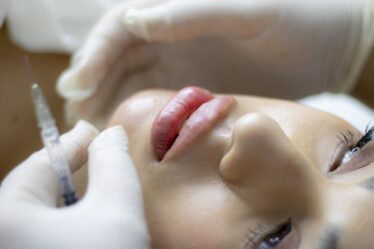
The importance of dental health truly becomes clear only when you face the consequences of cavities and gum disease. But once you recognize it’s an integral part of your overall health, you want to take care of your teeth as best you can.
We know that brushing is important, but what else can you do to get and maintain optimal oral hygiene? This step-by-step guide will help you say goodbye to cavities and other dental health issues and hello to a winning smile!
Step One: Know the Basics of Brushing
Brushing is so much more than most of us realize. There’s an art and a science to it!
We’ll start with the biological basics to ensure you understand the reasons you’re supposed to brush twice a day. Every time you eat, drink, and sleep, bacteria build up on your teeth. These microorganisms are always present in your mouth, where it’s moist and dark (their favorite environment). But if you don’t clean them out regularly, they multiply and get comfy in their new home as plaque.
Plaque is the sticky, white film that forms on enamel. When your teeth are full of plaque, any food you eat, particularly those with sugar, causes the bacteria to turn into acids that eat away at your enamel leading to cavities. Hardened plaque turns into tartar, which leads to gum-disease-causing inflammation.
To counter this war against healthy teeth and gums, the American Dental Association recommends brushing for two minutes twice a day using fluoride toothpaste. The best times to brush are first thing in the morning when you’re fighting all the bacteria that give you unsightly morning breath and at night to get rid of the leftover food particles from your day.
But, as we said, there’s an art to brushing. Ready to follow the proper brushing technique?
- Take your toothbrush and place it at a 45-degree angle against your gums.
- Then, move the brush gently back and forth in strokes about as wide as your tooth.
- Brush all the outer, inner, and chewing surfaces of each tooth.
- Finally, cover the inside surfaces of your front teeth by tilting the brush vertically and cleaning in up-and-down movements.
- Finish with a quick scrub of your tongue, and you’re done!
This artistic brushing technique ensures you get most of the bacteria off the surfaces, but what about the leftovers hiding? That’s where step two comes in.
Step Two: Floss
Flossing is an oft-ignored part of daily oral health. This step only takes a few seconds, but it can make or break your dental care results.
The thin string removes food particles and plaque between your teeth and along your gum line. These are the areas your toothbrush often misses. With floss, you get rid of plaque from under the gumline, preventing the development of cavities and discolored teeth from eroded tooth enamel and tartar. This quick step also reduces inflammation and soreness of the gums and prevents gum disease.
Don’t stress if you’re worried about adding one more thing to your day. Experts suggest flossing once a day (more is okay, but not necessary) before your bedtime brushing session.
Step Three: Head to the Dentist Regularly
Those twice-a-year sessions at the dentist not only give you sparkling clean, minty-fresh teeth, but they also ensure you catch any budding problems early.
Your dentist takes X-rays as needed, compares them to your previous sets, and watches for problems like jaw deterioration or infection. They’ll look for signs that you’re clenching your jaw and grinding your teeth in your sleep (a condition called bruxism).
These behaviors will damage your enamel, grinding away at the chewing surfaces and eventually leading to headaches, neck pain, and other side effects.
A visit to the dentist to diagnose bruxism helps you take control of the problem before your grinding causes more harm to your body. Bruxing is one of the main causes of TMJ, a painful condition that stems from jaw misalignment. (Read more on this in this article by JS Dental Lab.)
Step Four: Watch Your Habits
Last but not least is a step that you’ll incorporate into your lifestyle all day, every day: Watch your habits. Things like your eating style, whether or not you smoke or drink alcohol, and how you manage your stress impact your oral health.
Avoid sugary, chewy, and sticky foods or chewing on hard objects, as they build bacteria and damage your teeth. Smoking is a quick route to tooth decay and discoloration.
What about stress? How does that cause tooth damage? Well, although studies aren’t conclusive, there’s a strong correlation between stress and bruxism. If you’re grinding and clenching, it may be because you haven’t taken care of something in your life that’s stressing you out, and the cortisol and stress hormones in your body are showing up as bruxism.
Keeping your habits healthy will do more than help your teeth, though. You’ll feel the difference from the inside out throughout your whole body.
Conclusion
When you’re ready to take control of your dental health, you know it’s going to take more than basic brushing. But with these four steps, the path to optimal oral hygiene is (quite literally) in your hands!


